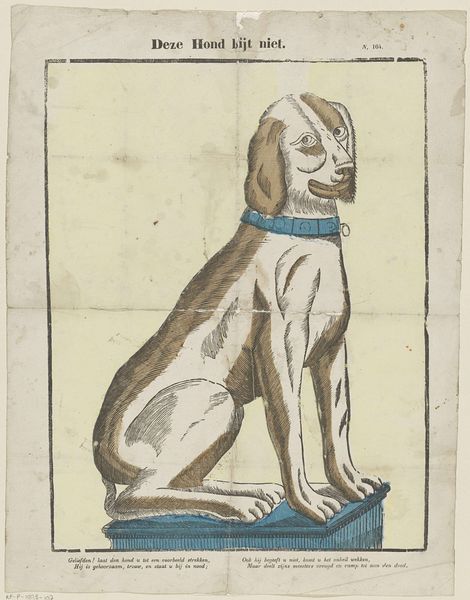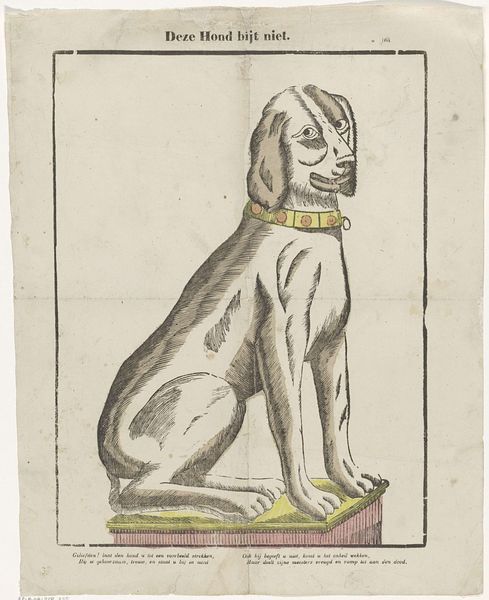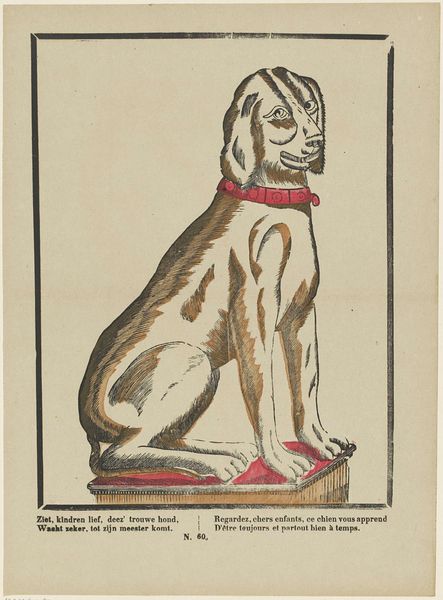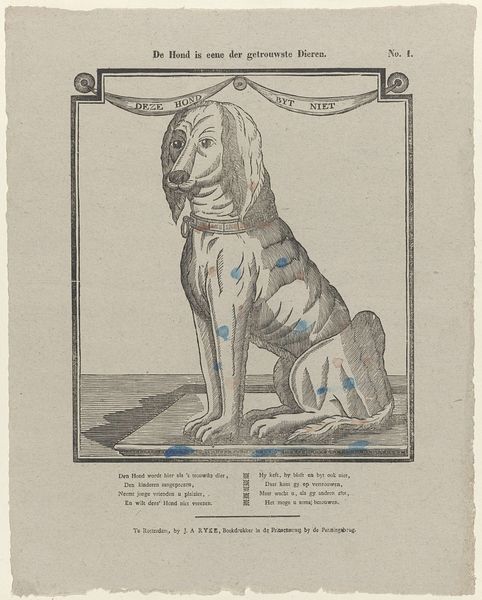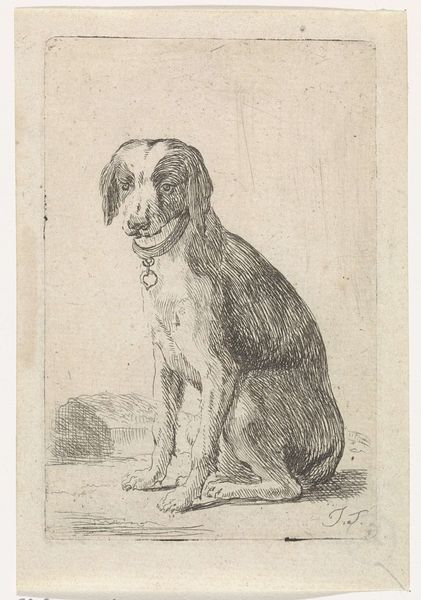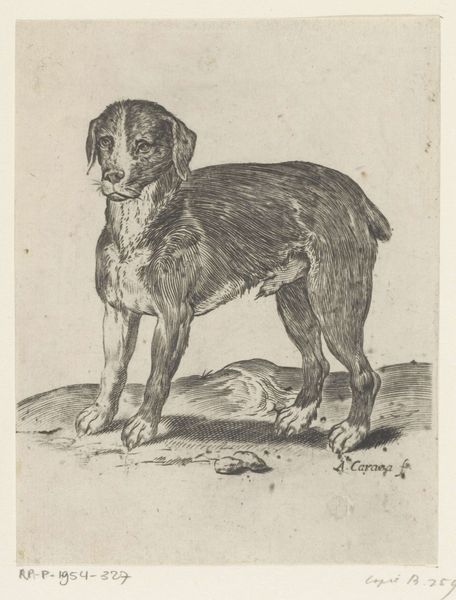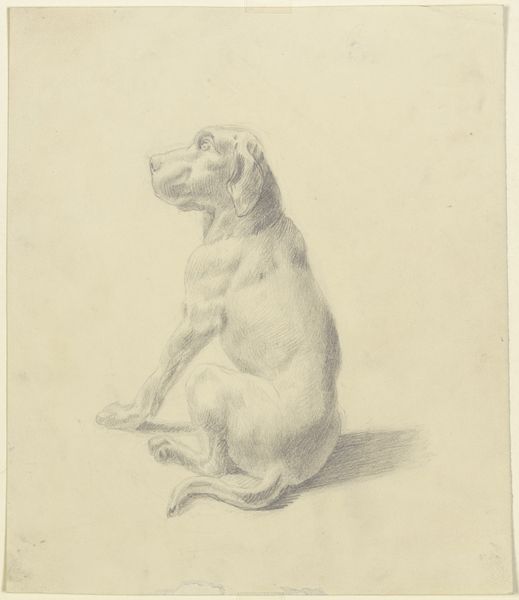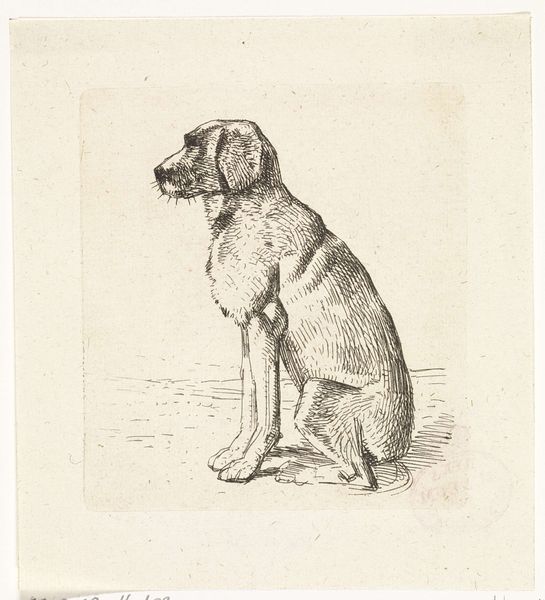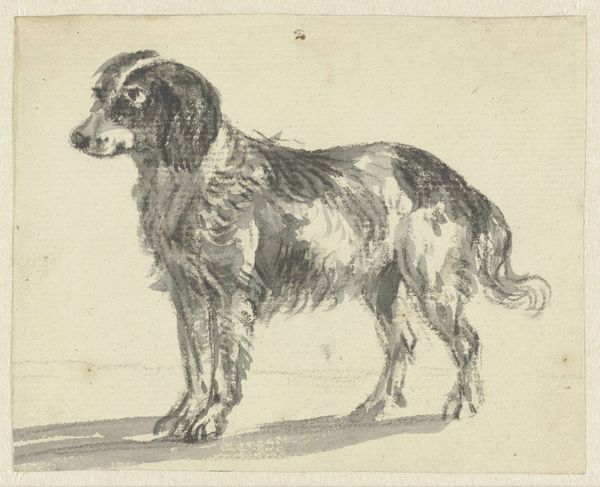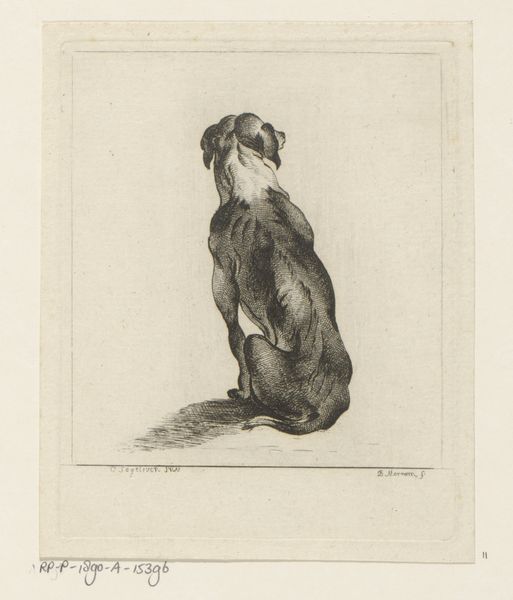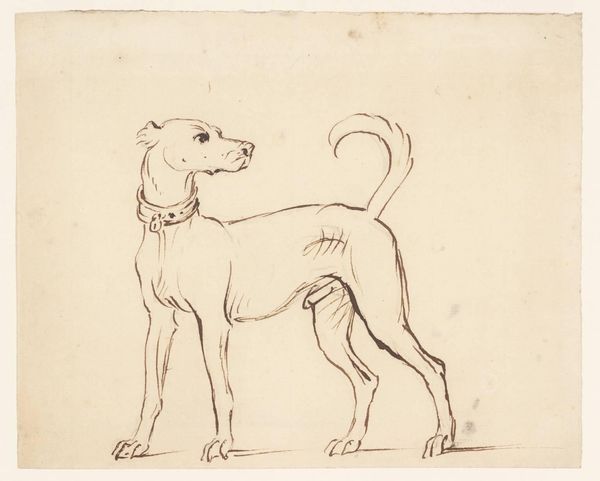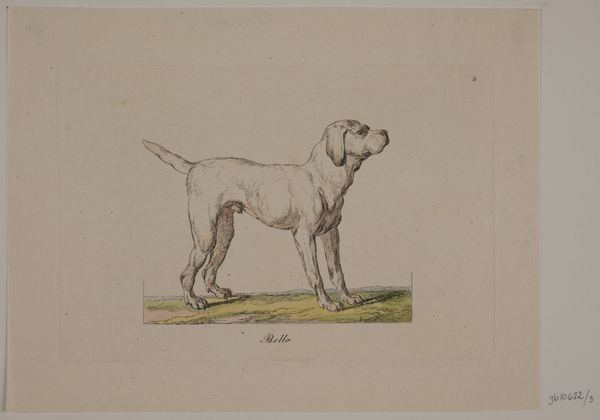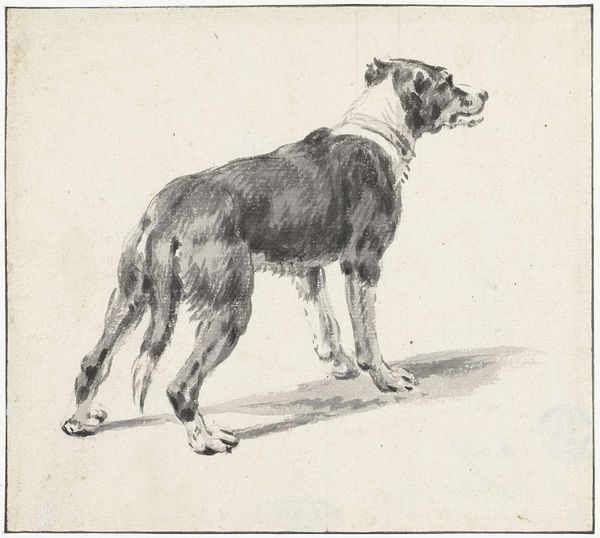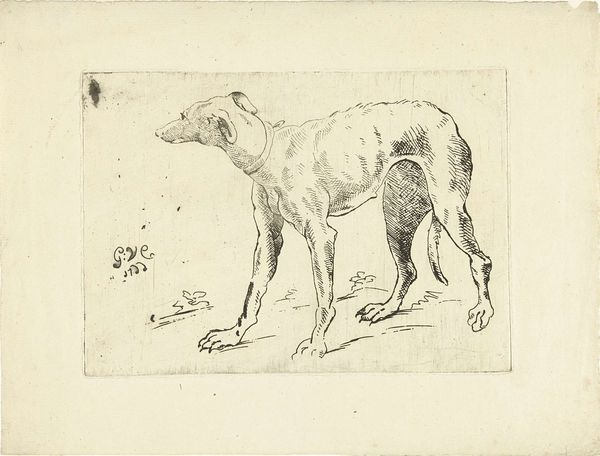
print, engraving
#
comic strip sketch
#
imaginative character sketch
#
light pencil work
#
animal
# print
#
dog
#
cartoon sketch
#
personal sketchbook
#
idea generation sketch
#
ink drawing experimentation
#
folk-art
#
sketchbook drawing
#
genre-painting
#
storyboard and sketchbook work
#
sketchbook art
#
engraving
Dimensions: height 394 mm, width 324 mm
Copyright: Rijks Museum: Open Domain
Editor: This is a print from somewhere between 1833 and 1856, titled "Deze hond bijt niet", which I understand translates to "This dog does not bite". It's a colored engraving, signed by Glenisson & Van Genechten. It's strangely charming but the dog's face seems…almost too human? What do you see in this piece? Curator: It's fascinating how the artist uses the image of a dog, an animal so often associated with loyalty and protection, to convey a larger message. Notice how the dog is presented, almost enthroned on a pedestal. What does that placement signify to you? Editor: Maybe elevating the status of a common animal? It does seem important given the inscription translates to, “He is obedient, faithful, and always at your side.” Curator: Exactly. Dogs throughout art history appear as symbols of fidelity, guidance, and even mourning. But what happens when you juxtapose that with the title "This dog does not bite"? Are we being reassured, or subtly warned that appearances can be deceiving? Think of Cerberus, guardian of the underworld... Editor: So, even a seemingly docile image might carry multiple layers of cultural meaning tied to memory or archetypes. Curator: Precisely. It taps into our shared cultural understanding of the animal, both as a comforting presence and, potentially, a dangerous one. Editor: It’s a lot more complex than just a simple dog picture! Curator: Indeed. These symbols are never static; they evolve through time and interpretation. I'm left thinking about societal expectations of domestic animals - what if “not biting” isn't necessarily a good thing? Food for thought!
Comments
No comments
Be the first to comment and join the conversation on the ultimate creative platform.
